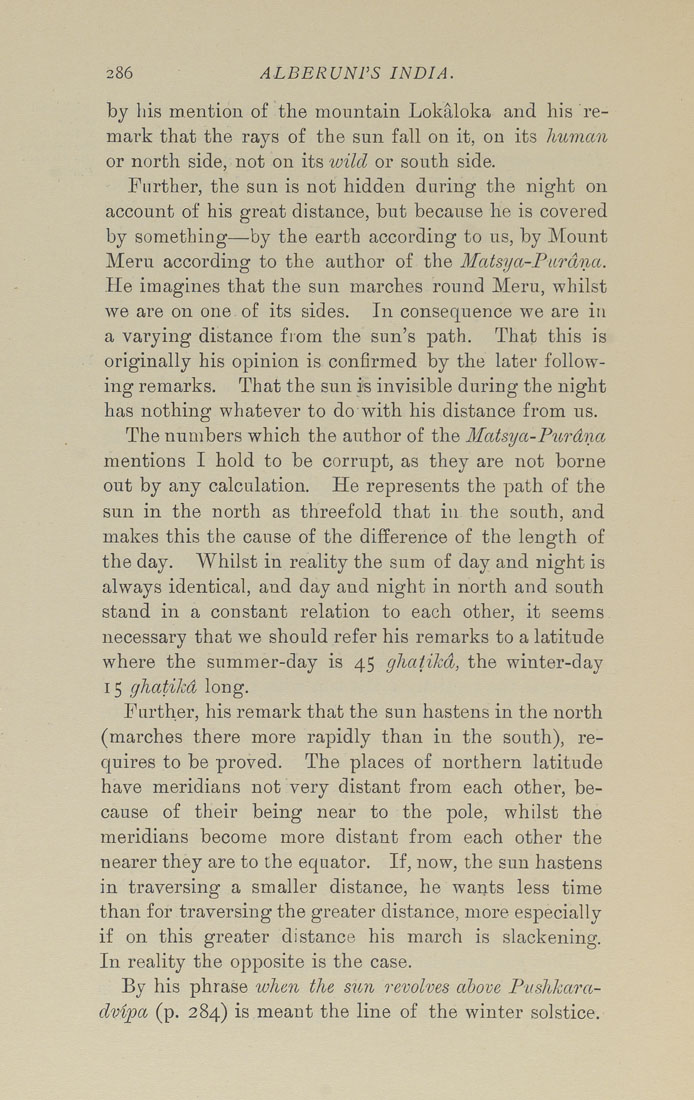Bīrūnī, Muḥammad ibn Aḥmad, Alberuni's India (v. 1)
(London : Kegan Paul, Trench, Trübner & Co., 1910.)
|
||
|
|
|
|
| Page 286 |

286 ALBERUNPS INDIA. by his mention of the mountain Lokaloka and his re¬ mark that the rays of the sun fall on it, on its human or north side, not on its wild or south side. Further, the sun is not hidden during the night on account of his great distance, but because he is covered by something—-by the earth according to us, by Mount Meru according to the author of the Matsya-Purdna. He imagines that the sun marches round Meru, whilst we are on one of its sides. In consequence we are in a varying distance from the sun's path. That this is originally his opinion is confirmed by the later follow¬ ing remarks. That the sun is invisible during the night has nothing whatever to do with his distance from us. The numbers which the author of the Mcttsy ct-Purdna mentions I hold to be corrupt, as they are not borne out by any calculation. He represents the path of the sun in the north as threefold that in the south, and makes this the cause of the difference of the length of the day. Whilst in reality the sum of day and night is always identical, and day aud night in north and south stand in a constant relation to each other, it seems necessary that we should refer his remarks to a latitude where the summer-day is 45 ghatikd, the winter-day 15 ghatikd long. Further, his remark that the sun hastens in the north (marches there more rapidly than in the south), re¬ quires to be proved. The places of northern latitude have meridians not very distant from each other, be¬ cause of their being near to the pole, whilst the meridians become more distant from each other the nearer they are to the equator. If, now, the sun hastens in traversing a smaller distance, he wants less time than for traversing the greater distance, more especially if on this greater distance his march is slackening. In reality the opposite is the case. By his phrase when the sun revolves above Pushkara- dvipa (p, 284) is meant the line of the winter solstice. |
| Page 286 |







